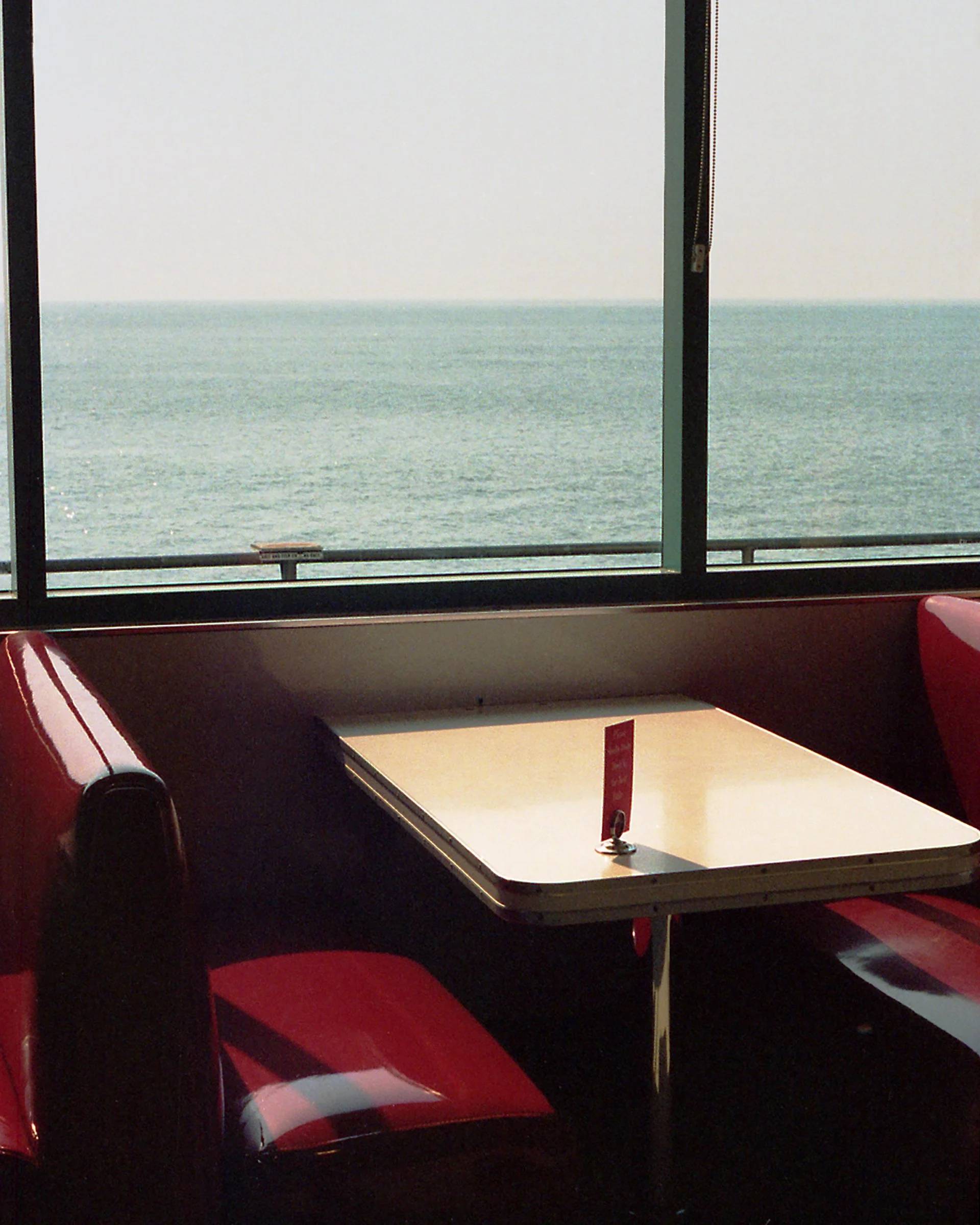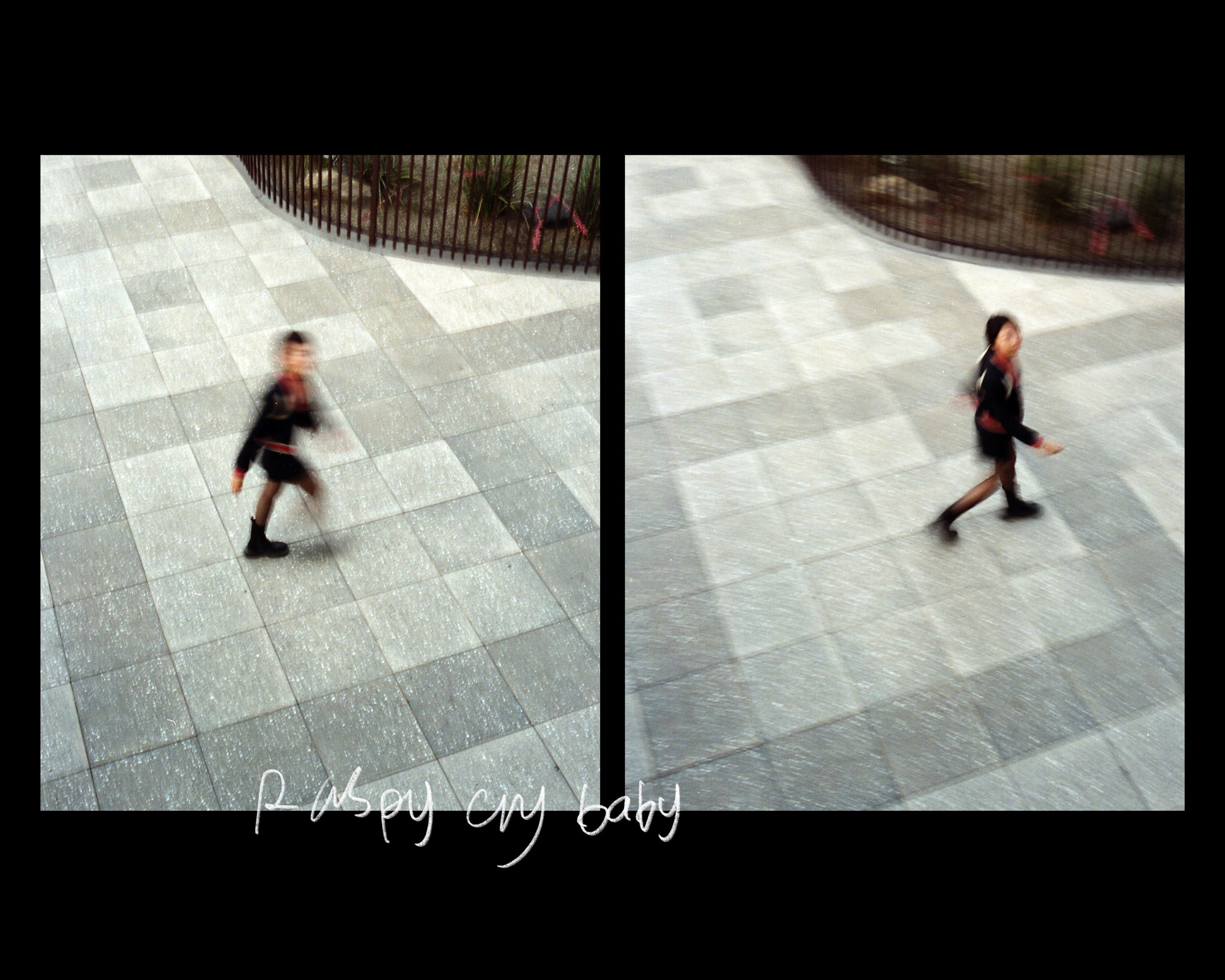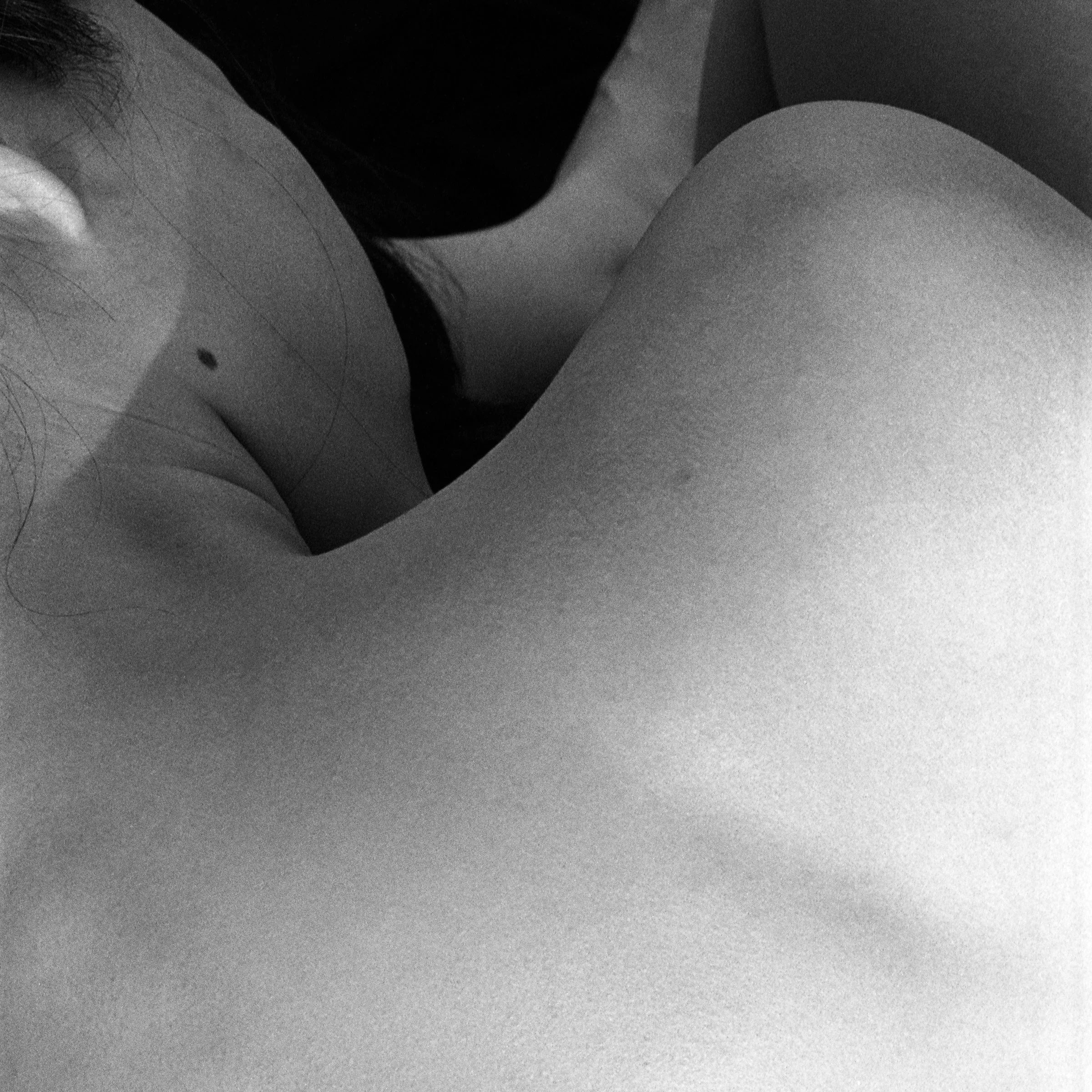.・゜゜・ ・゜゜・.
It is 2018, and the early weeks of our beginning black-and-white photography class are filled with excitement and curiosity. Our instructor, Cara, encourages me to collaborate with Karllon to exchange feedback on our initial prints. Cara believes I will resonate with Karllon’s work, and she is right.
I am captivated by the way Karllon depicts the world—her images possess an obscurity that draws me in, accompanied with a sliver of light and hope. They evoke a profound sense longing. One piece features the burnt orange light of a setting sun reflecting off the glass window of a home on the shorefront. This serene transition from day to night feels as though time has been suspended, capturing the inevitability of moments coming to a close.
Another striking work is a photograph of a seemingly inviting, cookie-cutter American home, adorned with a handwritten note on the window that reads, “Everything is going to be O.K.” The zoomed-in perspective and precise framing create an almost off-putting tension, prompting the viewer to question: Is that really so?
Karllon was among the first students in our class to experiment with techniques such as polyptychs, cutting through film negatives, and incorporating writing into and altering final prints. Later, she explored transferring images onto fabric. Her fearless approach to experimentation serves as a reminder that true artistic signature is discovered through bold exploration and creativity.
A note from the artist
-ˋˏ✄┈┈┈┈
“An overlooked art form that has stuck with me is the art of subtlety. I’ve always been one to read between the lines, where the reaction outshines the initial action; I suppose that’s the film student and over-thinker in me. And I’ve found that that ideology has followed me throughout the artistic ventures I pursue.
From adolescence into adulthood, the quiet has always spoken louder to me than the noise of everyday life. There is so much beauty to be found in the mundane; the way the sunlight ricochets off a drinking glass or the warmth that emits from a window on a balmy, summer evening. But there’s also something so isolating about it– I’ll only get to experience this moment of bliss for the first time once. What if I forget what it feels like?
I aim to capture photographs that emit those feelings of bittersweet nostalgia. An empty diner shot through a hazy window or a little house centered on a hilltop can say so much with so little. In framing portraits by which the subject’s face is partially obscured or physically manipulating a strip of film post-development, a memory can easily be warped. Nostalgia is also funny in that way– What face was she making, again? She was definitely mad at me. Or was she laughing at something I said? I don’t remember, but that was a nice time. I miss her.
That is what I hope to embody in my work– Each moment is fleeting and life is short, but this nothingness is so silly and beautiful, I could cry.”






En français ✧.*
Nous sommes en 2018, et les premières semaines de notre cours de photographie sont remplies d'excitation et de curiosité. Notre instructeur, Cara, m'encourage à collaborer avec Karllon pour échanger quelques retours sur nos tirages initiaux. Cara est convaincue que je résonnerai avec le travail de Karllon, et elle a raison.
Je suis captivée par la façon dont Karllon dépeint le monde—ses images possèdent une obscurité qui m'attire, accompagnée d'un ruban de lumière et d'espoir. Elles évoquent une profonde nostalgie. Une de ses pièces présente la lumière orange d'un soleil couchant se reflétant sur la fenêtre d'une maison sur le rivage. Cette transition sereine du jour au soir donne l'impression que le temps a été suspendu, capturant l'inévitabilité d’un moment touchant à sa fin.
Une autre image frappante est celle d'une maison américaine semblablement accueillante, ornée d'une note manuscrite sur la fenêtre qui se lit comme suit: "Tout va être O.K." La perspective zoomée et le cadrage précis créent une tension presque rebutante, incitant le spectateur à se remettre en question: est-ce vraiment ainsi?
Karllon a été parmi les premières étudiantes de notre classe à entreprendre des techniques telles que les polyptyques, le découpage de bobine de film, ainsi que la manipulation des impressions finales. Plus tard, elle a exploré le transfert d'images sur tissu. Son approche intrépide de l'expérimentation nous rappelle que la véritable signature artistique est découverte à travers une exploration et une créativité audacieuses.
Une note de l'artiste
«Une forme d'art négligée qui m'a collée est l'art de la subtilité. J'ai toujours fait parti de ceux qui lisent entre les lignes, où la réaction surpasse l'action initiale; Je suppose que c'est l'étudiante de cinéma en moi. Et j’ai réalisé que cette idéologie m’a suivi dans les entreprises artistiques que je poursuis.
De l'adolescence à l'âge adulte, le calme m'a toujours parlé plus fort que le bruit de la vie quotidienne. Il y a tellement de beauté dans le banal; La façon dont la lumière du soleil ricoche sur un verre à boire ou la chaleur qui s’émet d'une fenêtre un doux soir d'été. Mais il y a également quelque chose d’isolant à ce sujet—ce moment de bonheur est unique et je ne le revivrai jamais de la même façon. Et si j'en oublie le ressenti?
Je vise à créer des images qui émettent ce sentiment de nostalgie douce-amère. Un restaurant vide capturé à travers une fenêtre brumeuse ou une petite maison centrée sur une colline peut en dire beaucoup avec si peu. En obscurant partiellement le visage d’un sujet ou en manipulant une bobine de film après le développement, un souvenir peut facilement être déformé. La nostalgie est également drôle de cette façon— quel visage faisait-elle, encore une fois? Elle était définitivement en colère contre moi. Ou se moquait-elle de quelque chose que j'ai dit? Je ne me souviens pas, mais c'était un bon moment. Elle me manque.
C'est ce que j'espère faire partager à travers mon travail—chaque instant est éphémère et la vie est courte, mais ce néant est si idiot et beau, je pourrais pleurer. »



